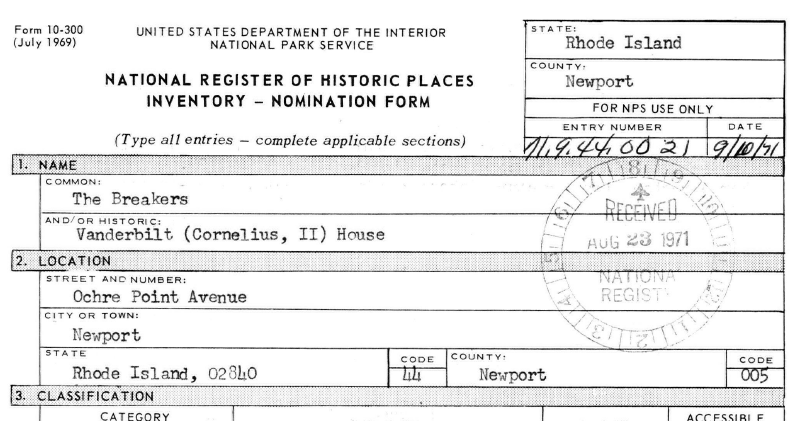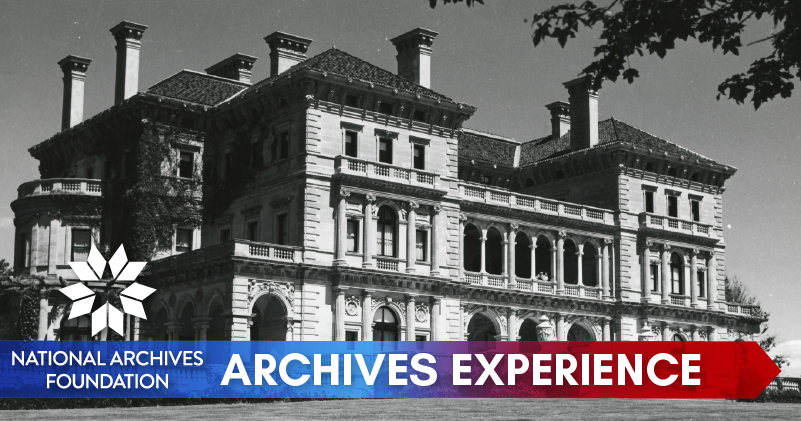Archives Experience Newsletter - May 10, 2022
All That Glitters
Gilded Homes of the Rich & Famous
From the HBO drama to the theme of the Met Gala theme, the Gilded Age has gotten a lot of airtime in the past few weeks. During this iconic era, industry boomed and commerce exploded; by 1890, the United States eclipsed Great Britain as the largest economy in the world. Mark Twain coined the term “Gilded Age” to mock what he saw as unnecessary opulence in the face of crushing inequality. The era also gave rise to one of the most enduring pieces of American lore: the self-made millionaire – and the idea that one day, you could be one too.
When families like the Astors, Carnegies, Rockefellers, and Vanderbilts expanded their enterprises and their wealth, they needed to spend it. In the summers, they moved their close-knit society to the rugged coastline of Newport, Rhode Island, and built fabulous mansions.
These unique houses became the American versions of palaces and served as the backdrop for some of the most powerful and notable players of the era. From robber barons to railroad tycoons, suffragists to presidents, Newport played host to those who shaped the Gilded Age and our history as the turn of the century approached.
The Archives records in this week’s newsletter show that the setting of history is just as important as the characters.

Patrick Madden
Executive Director
National Archives Foundation
From New York to Newport
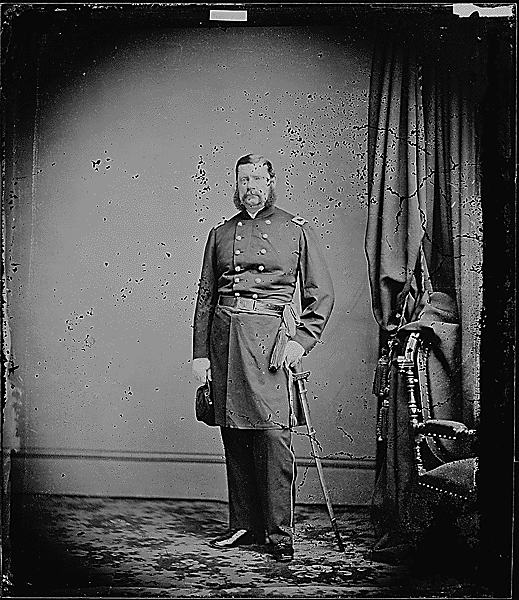
Portrait of Colonel John Jacob Astor III
National Archives Identifier: 528472
The fame and social importance of the Astor family of New York City grew out of the financial success of John Jacob Astor, who immigrated to the United States from London in 1783 at the age of twenty and set about building a fortune in the fur trade. He also imported opium from China, and he began buying real estate in New York. His business interests eventually extended from coast to coast, and he became one of the richest people of all time.

The Astor Fur House is on the National Register
National Archives Identifier:106779834
John Jacob Astor married Sarah Cox Todd in 1785, and they had eight children. Sarah helped him with the details of his business and managed the running of his household. When European tastes for furs began to decline, Astor gradually got out of that business and moved more into real estate on Manhattan Island. Later in life, he also began to be involved in philanthropic endeavors. His son William Backhouse Astor, Jr., one of only two sons who survived to adulthood and who inherited most of his father’s estate, followed in John Jacob’s footsteps by buying up land in Manhattan and building on it. (Fun fact: the neighborhood of Astoria is named for John Jacob Astor, but that’s a story for another newsletter!)
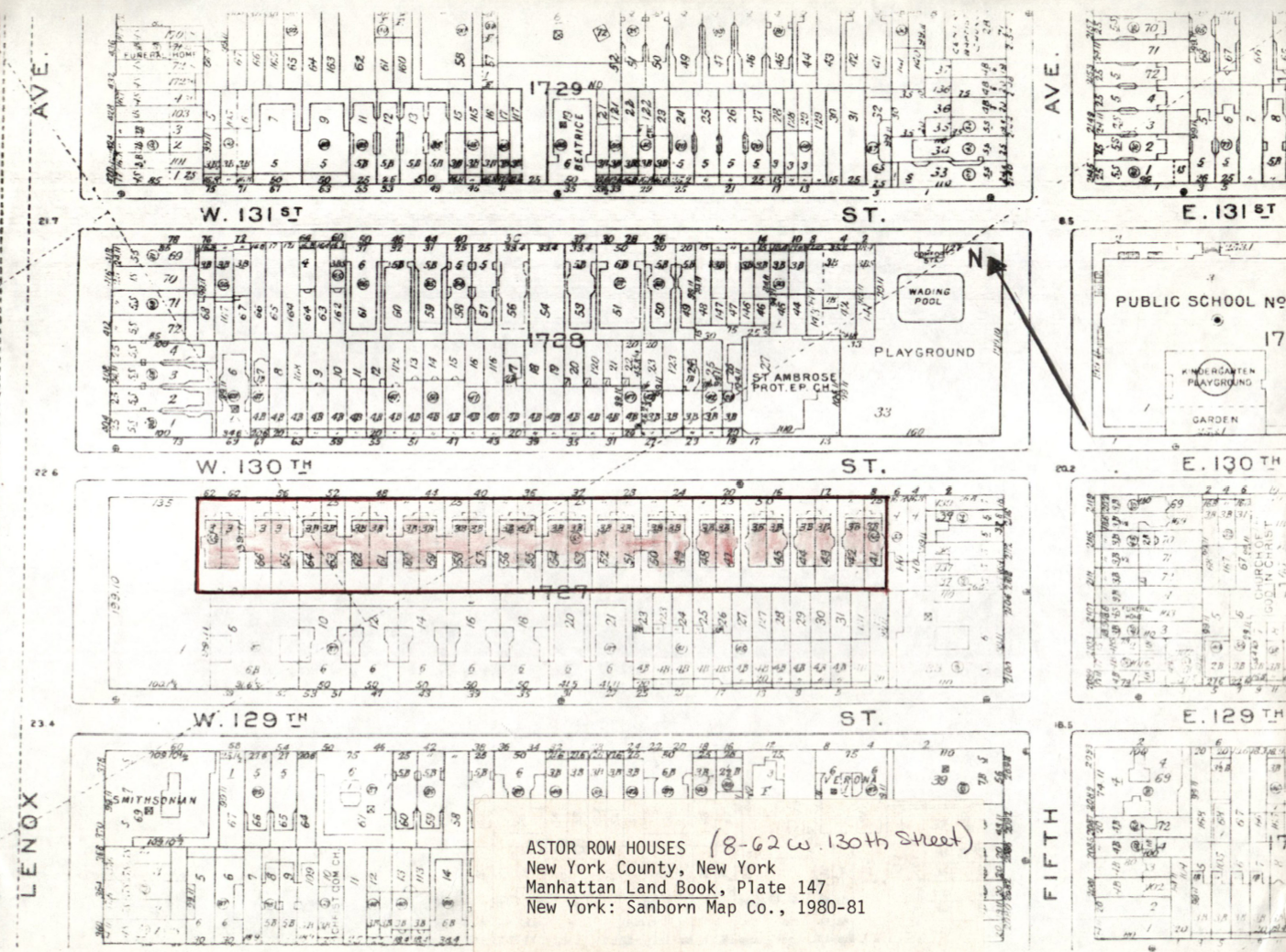
Astors real estate tracts
National Archives Identifier: 75319273

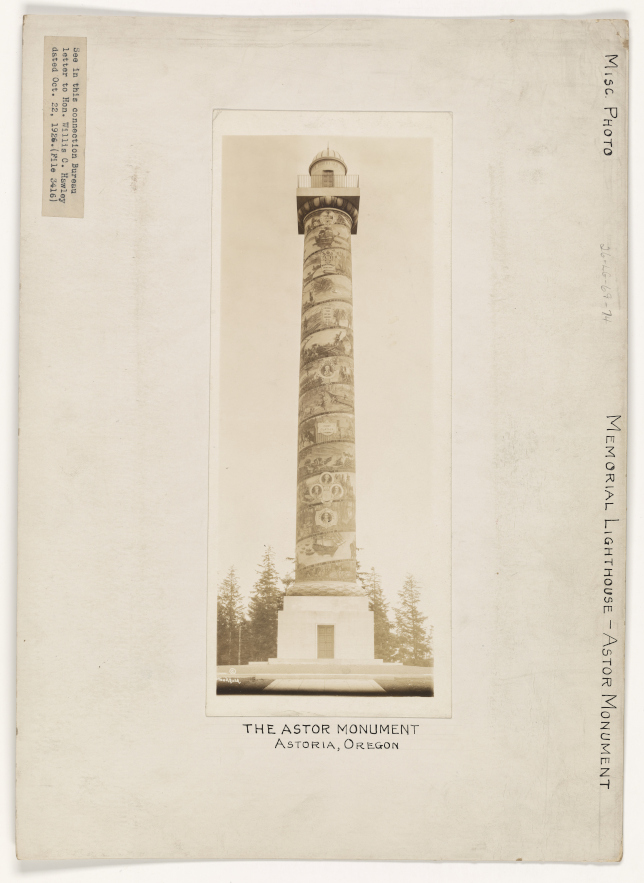
Astor Memorial Lighthouse in Astoria, Oregon – erected in 1926
National Archives Identifier: 45710023
In roughly a generation, the Astors owned massive tracts of real estate in New York City and outside the city limits. They soon became known as the “landlords of New York.” One of the most opulent houses was the Mrs. William B. Astor House, built as a double mansion for Caroline Schermerhorn Astor, the widow of William Backhouse Astor, Jr., and her son, John Jacob Astor, Jr., on the corner of Fifth Avenue and 65th Street. At the time, Caroline Astor was known as “The Mrs. Astor.” The Astors also owned Astor Row , twenty-eight row houses in Harlem built on property that John Jacob Astor bought and William Backhouse Astor, Jr., went on to develop. And of course they owned a summer home in Newport, Rhode Island, Beechwood, where they went to vacation when summer in the city became unbearable. William Backhouse Astor, Jr., bought Beechwood in 1881 and hired the eminent American architect Richard Morris Hunt to remodel it for his family. The ballroom of Beechwood was large enough to accommodate all of “the 400,” the most prominent socialites in the city.
John Jacob Astor IV inherited Beechwood from Mrs. Astor upon her death in 1908. In 1912, he was returning from Europe on his honeymoon with his second wife, Madeleine Talmage Force, on the RMS Titanic when it sank in the Atlantic Ocean. Mrs. Astor survived, but John Jacob Astor IV did not.
New Money Showdown

Cornelius Vanderbilt
National Archives Identifier: 528566
During the Gilded Age, the competition to accrue wealth was closely followed by the competition to flaunt that wealth on the obvious symbols: clothing, furs, jewels, houses. The Vanderbilts, whom the established families of New York looked down on as “new money,” were determined to be accepted by the New York elite, and they set about achieving that by spending their new money on the symbols that would establish them in the city’s upper echelons.
The founding father of the family, Cornelius Vanderbilt, went to work for his father, who ran a ferry service between Staten Island and Manhattan, when the younger Vanderbilt was eleven. According to Vanderbilt: The Rise and Fall of An American Dynasty, Anderson Cooper’s painstaking and illuminating record of his family’s history, Cornelius started his own ferry business at the age of sixteen with a loan of $100 from his mother, Phebe Hand (about $2,300 today). From that humble beginning, he leapfrogged from wind-driven ferries to steamboats to railroads and oceangoing vessels, piling up a fortune that rivaled that of the Astors in the process.
Two generations later, Alice Claypoole Vanderbilt and Alva Vanderbilt, the wives of Cornelius Vanderbilt II and William Kissam Vanderbilt, respectively, were locked in a ferocious competition to see who could build the most ostentatious house in Newport. Alva Vanderbilt and William Kissam Vanderbilt built Marble House in Newport between 1888 and 1892. They commissioned architect Richard Morris Hunt to design it; it was reportedly modeled on the Petit Trianon at the Palace of Versailles. At the time, it was the largest and most elaborate of the “summer cottages” built in Newport.
But Cornelius and Alice almost certainly won the fight for the fanciest summer “cottage” when they hired architect Richard Morris Hunt to build The Breakers between 1893 and 1895. Sitting on fourteen acres of property, the 62,482-square-foot house has more than seventy rooms on five floors and overlooks Easton Bay in the Atlantic Ocean. Its structural elements are all marble and steel because Cornelius insisted that the house be as fireproof as possible.
William Kissam Vanderbilt gave Alva Marble House for her thirty-ninth birthday. She divorced him in March 1895. She then contrived to marry her only daughter, Conseulo Vanderbilt, to Charles Spencer-Churchill, the Ninth Duke of Marlborough, in November 1895, but the marriage was truly loveless and was annulled by mutual consent in 1921. By then, Alva herself had long since remarried and been widowed, after which she took up the cause of women’s suffrage with gusto, donating money to women’s organizations in both the United States and the United Kingdom and participating in marches.
Do You Like Large Parties?
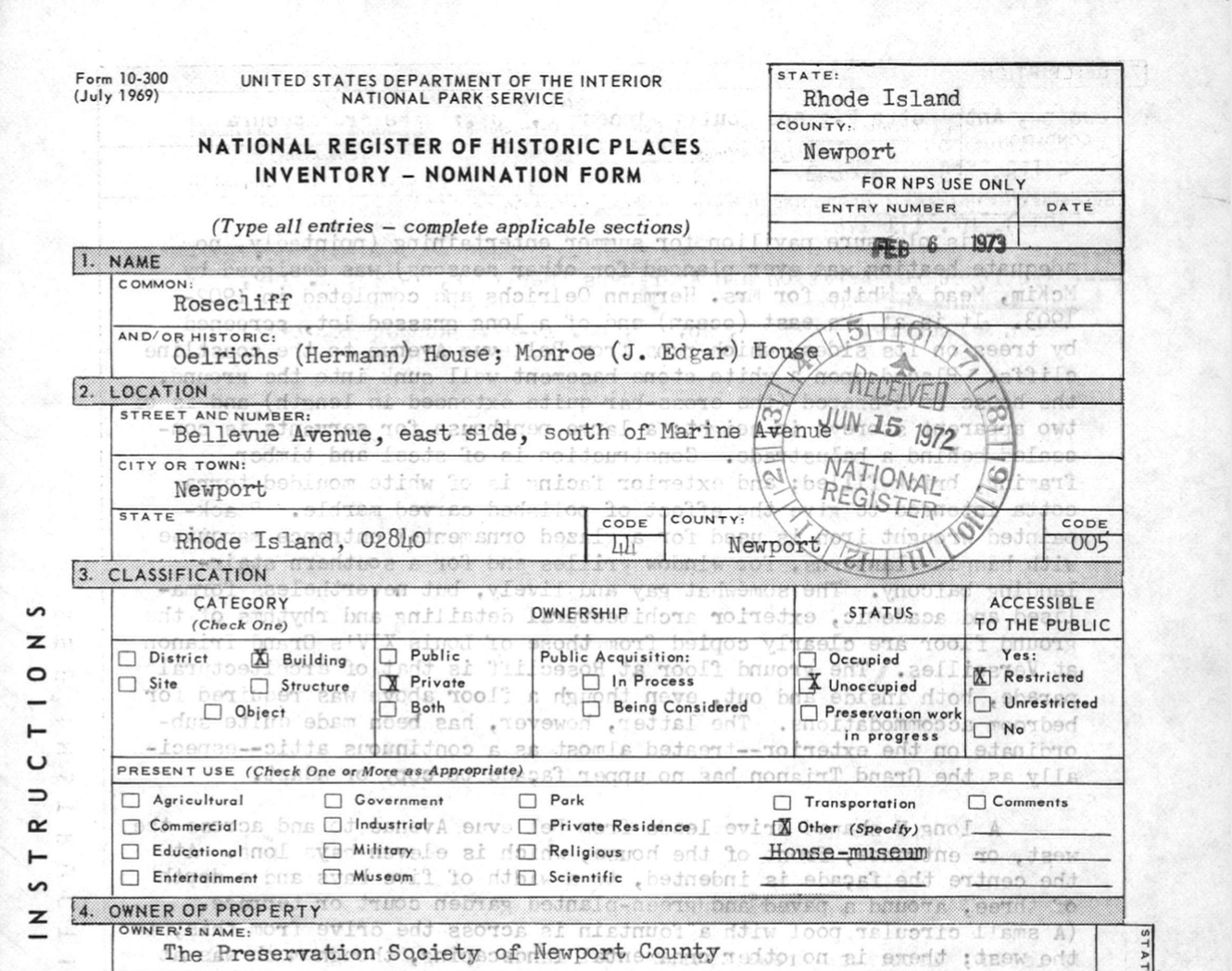
Rosecliff nomination and inventory in the National Register of Historic Places
National Archives Identifier: 41374997
McKim, Mead, and White was an American architectural firm founded by the first two partners, Charles McKim and William Rutherford Mead, in New York City in 1877; the third, Stanford White, joined the partnership in 1879. The firm is widely considered to be the most influential in the U.S. in the late nineteenth and early twentieth century. Among the firm’s commissions are the main campus of Columbia University, Pennsylvania Station, and the Brooklyn Museum in New York, the Rhode Island State House, and the Boston Public Library.

Ceremonies – New York – Prominent women march for the Red Cross. From left to right are: Mrs. Herman Oelrichs and Mrs. Irving Brokaw, marching in the Red Cross parade in New York City, May 18, 1918
National Archives Identifier: 23923283

Ceremonies – New York – Mrs. George F. Baker leads a unit in the Red Cross Parade. Mrs. George F. Baker is shown here leading her unit in the Red Cross parade down Fifth Ave. Marching in back of Mrs. Baker are: Mrs. Gifford Cochrane, Mrs. William G. Loew, Mrs. Arthur Scott Burden, Mrs. William K. Vanderbilt, J., Mrs. Ogden L. Mills, Miss Muriel Vanderbilt, Mrs. Herbert Oelrichs, Mrs. Irving Brokaw and Mrs. John Pratt
National Archives Identifier: 23923303
Theresa Fair Oelrichs, who had inherited a fortune from her father, James Graham Fair, one of the partners in the Comstock Lode, her husband, Hermann Oelrichs, an agent for the Norddeutscher Lloyd steamship, and Theresa’s sister Virginia hired McKim, Mead, and White to build them a “summer cottage” in Newport. Stanford White was the principal architect. Construction started in 1898 but wasn’t completed until 1902, and was delayed on occasion when the Oelrichs moved in and out of the house to throw elaborate parties at the house that they would call Rosecliff.
Like Alva Vanderbilt, Theresa Oelrichs embraced an important cause later in life. Here, she is marching with other socialites on behalf of the Red Cross.
Rosecliff remained in private hands until 1971, when it was donated to the Preservation Society of Newport County. It was added to the National Register of Historic Places in 1973. It has been used as the backdrop of several films and TV series, including High Society (1956), The Great Gatsby (1974), and several episodes of Antiques Roadshow.

The Yellow White House
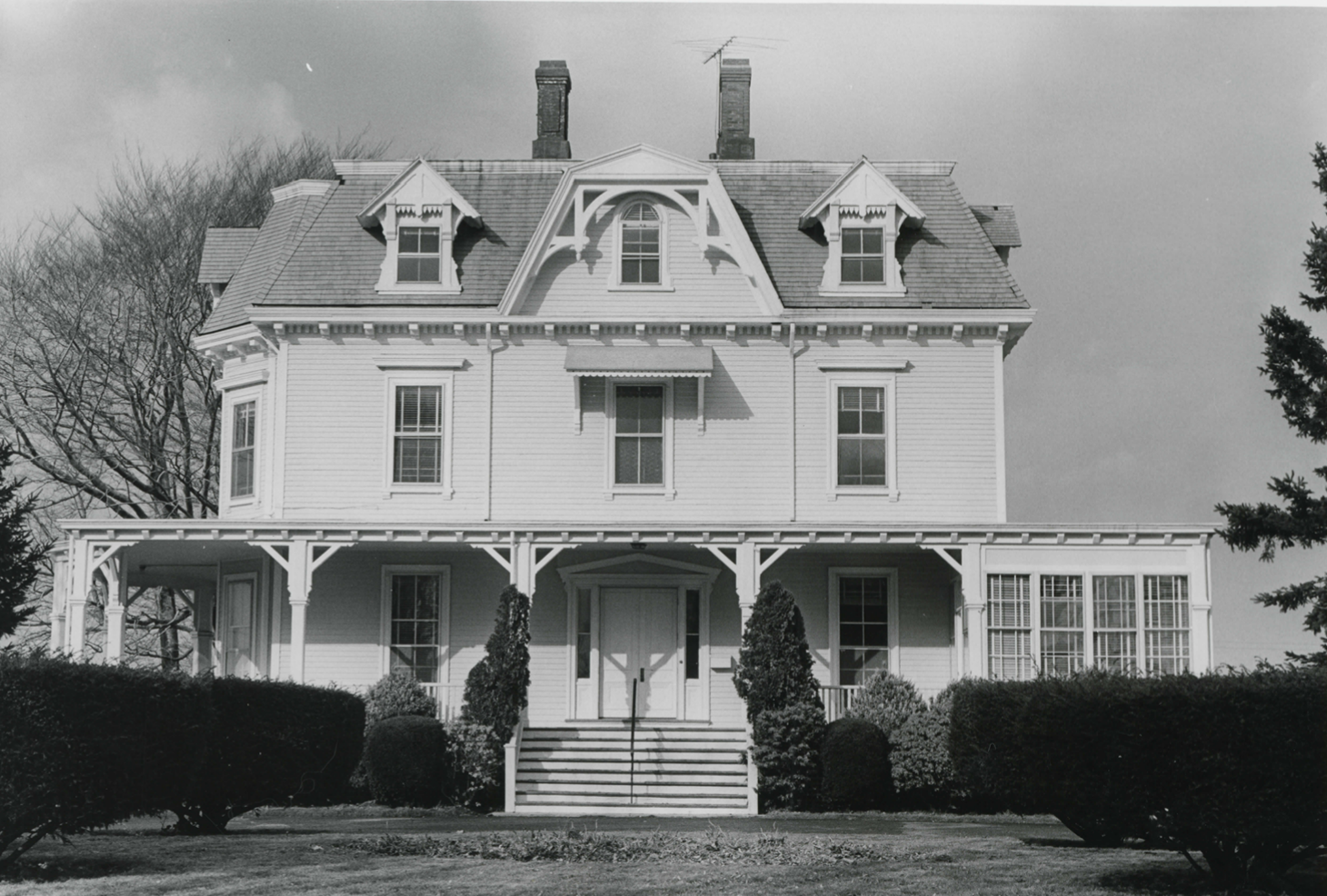
National Historic Landmark – Eisenhower House
National Archives Identifier: 41375074
Vacationing in Newport wasn’t just confined to the Gilded Age. In 1958, President Dwight D. Eisenhower was vacationing in Newport and was staying at the Naval War College on Coasters Harbor Island. However, he wanted to get in a lot of time on the golf course, so he soon moved to the Commandant’s Residence (also called Quarters Number One) of Fort Adams, which is close to the Newport Country Club. The property soon became known as the Eisenhower House, and it is now part of Fort Adams State Park. The House is still being preserved today, and it’s open as a historic venue for visitors and events.
Eisenhower vacationing and golfing
*No Sound
(8 minutes 20 seconds)
Source: National Archives Identifier: 83316
Summer in Camelot
If families like the Astors and Vanderbilts were the royalty of the 19th century, the Kennedys were the royalty of the 20th – and they too summered in Newport. Hammersmith Farm’s twenty-eight–room main house was built in 1887 for John W. Auchincloss in Newport. He was the great-grandfather of Hugh D. Auchincloss (1897–1976), who in turn was Jacqueline Lee Bouvier’s stepfather. Jacqueline spent considerable time at Hammersmith Farm during her childhood and school years. She particularly enjoyed indulging her passion for equestrian sports, which she pursued for the rest of her life. Jacqueline had her wedding reception at Hammersmith Farm when she married Senator John Fitzgerald Kennedy on September 12, 1953, at St. Mary’s Church in Newport. Even after they became the First Family, the Kennedys continued to visit Hammersmith Farm in the summers. President Kennedy particularly enjoyed sailing on Rhode Island Sound.

